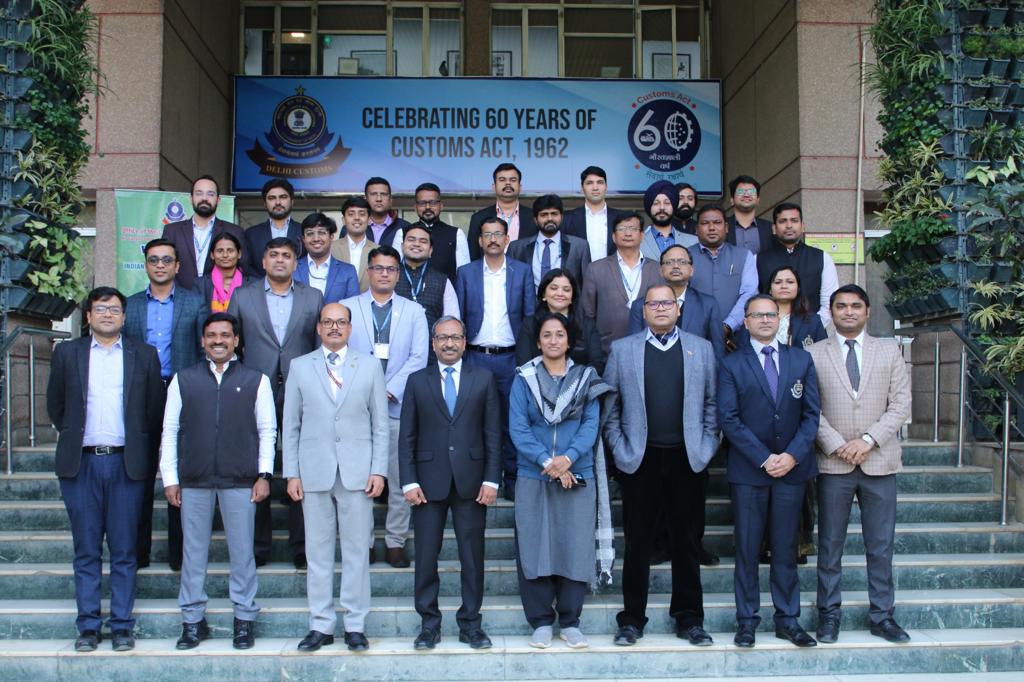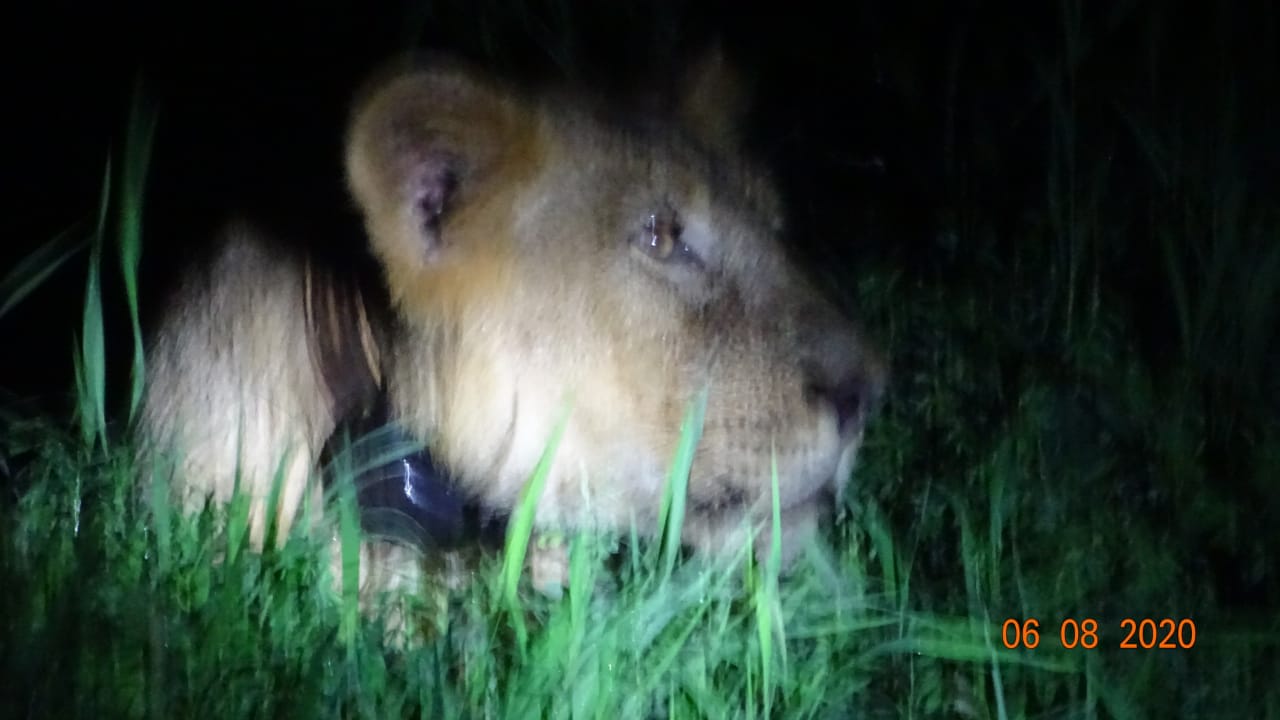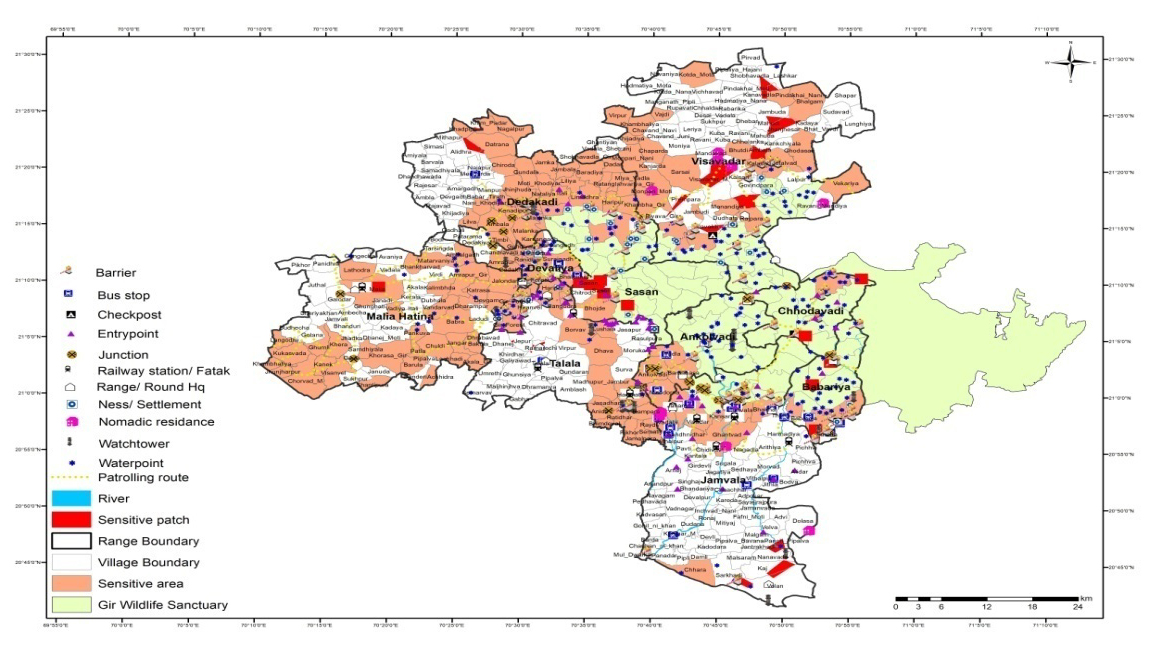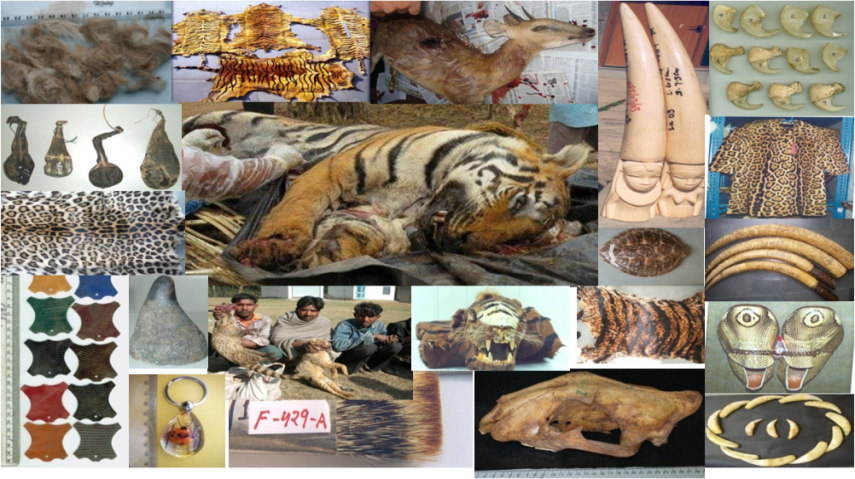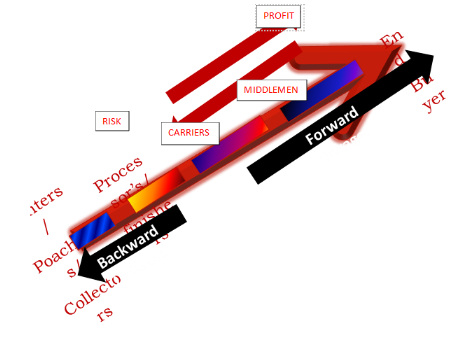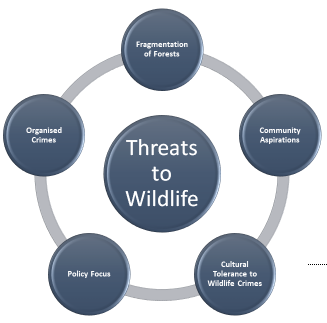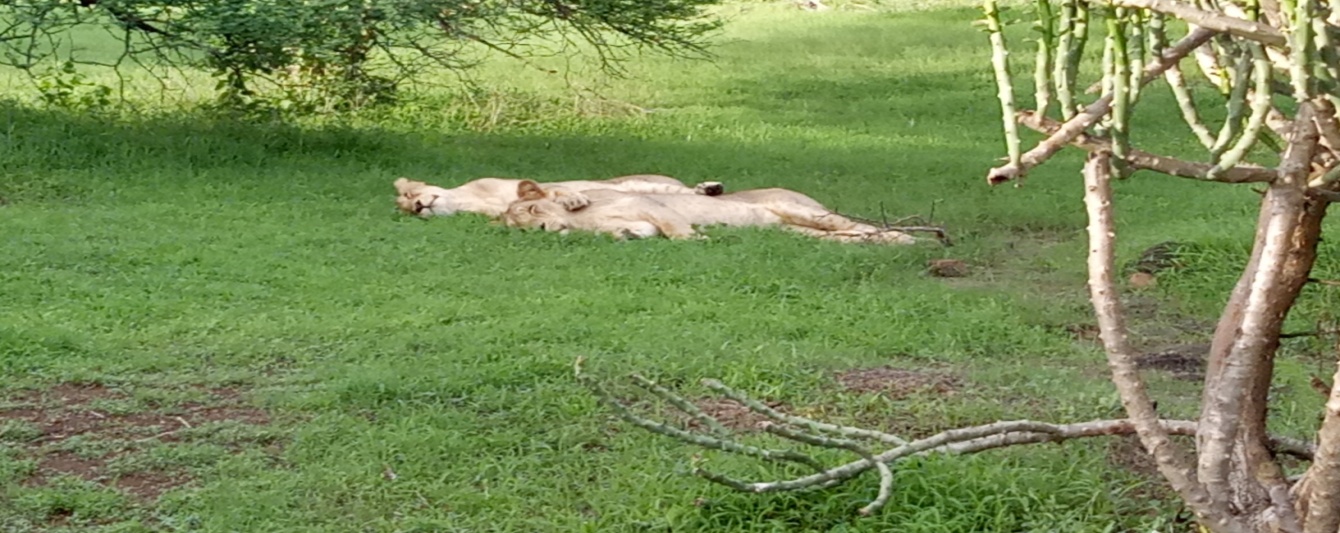50 Years of WPA - A Critical Analysis Part-2
Blogs Home
- 07 Jun 2023
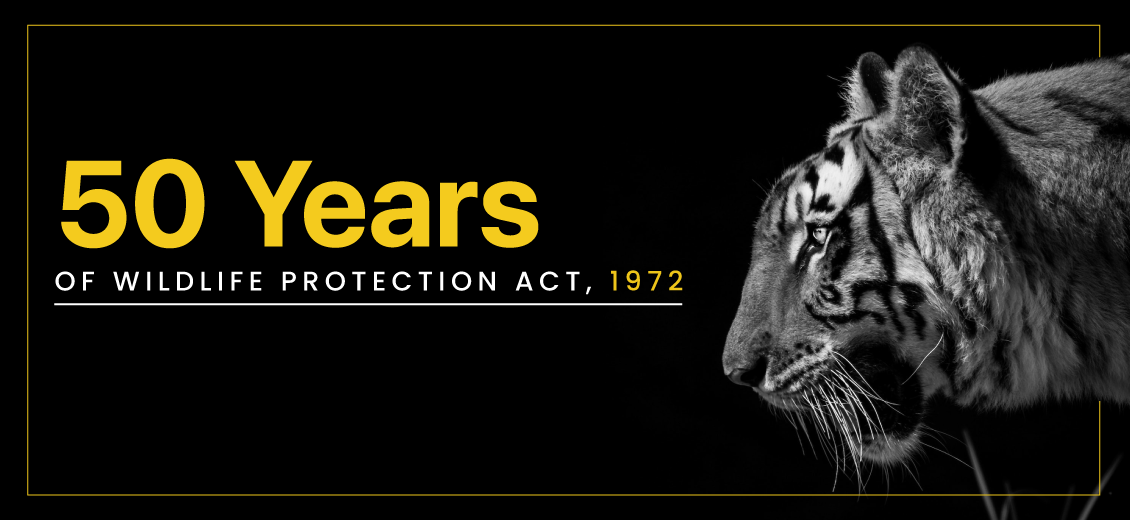
About the Author
Ayush Verma, an Indian Forest Service Officer of 2018 batch, Gujarat Cadre, is a recipient of Government of India's Gold Medal in All-Round Outstanding Performance, Gold Medal for Topper in Core Forestry and Sanjay Singh Memorial Prize along with Hill Memorial Prize, K.M. Tiwari Memorial Prize for Forest and People, Dr. B.N. Ganguly Award of Academic Excellence and K.P. Sagreya Shrestha Vanik Puraskar in his professional training at IGNFA
An Engineering Graduate from IIT BHU, he presented a Model on Geo-Sequestration in Tata Steel that evinced his interest in the field of environment. His natural love for outdoors, compassion for animals and an internal urge to pay his "Prakriti Rna" to Mother Nature has drawn him into Forest Services.
He has authored a Book on Patrolling Plan for GIR during his stint as Assistant Conservator of Forest in Gir (West) Division. Currently he is posted as Deputy Conservator of Forests, Social Forestry Division BOTAD with jurisdiction over Botad and Bhavnagar – both of which are part of Greater Gir region
In the Forestry Sector, his areas of Interests include Forests and People (for which he had Written a Report on "Tribals and Forests" in his IGNFA stint) and Wildlife Conservation to which he Dedicates his Self-Authored PATROLLING PLAN FOR GIR. For this seminal work he has been awarded with SKOCH AWARD for Governance too.
In this write-up, he encapsulates his opinion on the Wildlife Protection Act, 1972 by an attempt to present a slice of his field experiences and ground knowledge as a forester. He attempts to point out the different practical and procedural aspects in implantation of WPA. To make his inferences and his personal opinion more Objective, he has drawn a SWOT Analysis of this Act.
DISCLAIMER
The Views expressed here are Purely in Personal Capacity and not in Official Position. The author tries to present a dispassionate analysis of the Wildlife Protection Act based on his Field Experiences, learning of Professional training and his observations as a forester. In no manner or way, should this write-up be interpreted as views of the government, whether wholly or partially.
Scheme of this Blog
The Blog will be published in two parts-
Part I:
- WPA in the Backdrop of Wildlife Protection
- Strengths and Positives of WPA
- Perceived Weaknesses and Scope for Improvement
Part II:
- New Opportunities to bolster Wildlife Protection Framework
- Perceived Threats to Wildlife Protection Framework
- Author’s Take on the 50 Years of WPA
This is Part II of the Blog, for Part I Click here.
New Opportunities to Bolster Wildlife Protection Framework
The recent amendment to the Wildlife Protection Act, 2022 has opened new avenues to deal with the dynamics of Wildlife Crime Control, Detection and Conviction. Notably, advances in Technology that none-the-less remain two-edged sword and Innovation and Outreach to Communities are the new opportunities to strengthen Wildlife Protection Framework in India.
A. CITES Compliance
Recent amendment to WPA was made particularly to make India’s Legal Framework CITES Compliant. These can be gauzed from:
- Establishment of a Management Authority and a Scientific Authority as:
Sec 49E: Central Govt to Designate Management Authority to Grant Export or Import Permits for Trade of Specimens – Owners of live specimen must obtain REGISTERATION Certificate from MGMT AUTHORITY
Sec 49F: Establishment of Scientific Authority for sustainable exploitation of flora and fauna
Field Experience
- Management Authority shall establish a Legal Framework to check trafficking of Wildlife. It also regulates, control and provides platform to supervise, observe and monitor wildlife trade and transfer. Now, Registration of such Wildlife that is Intended to be Exported and/or imported could be done on PARIVESH portal.
- Gives Greater role to customs officers in detection and report of wildlife crimes – this calls for training of Customs Officials in Wildlife Protection Act. Also, it solicits a smooth co-ordination among the forest and Customs Officials.
Meetings for Collaboration among Forest and Customs Officials is a Welcome Step in view of the ever-increasing trans-boundary nature of wildlife crime
- Designation of Scientific Authority is certainly a welcome step, but its effectiveness is yet to be seen. It can only function well if along with accountability, it has considerable autonomy as well.
Rationalisation of Existing Schedules and Addition of a new Schedule: Reduction of hitherto Six Schedules to four. The Fourth Schedule deals with CITES Species. This is a welcome step.
Field Experience
- Existence of 6 Schedules – of that particularly the Schedules I to IV created much confusion among the field staff. Classification into wrong schedule can completely alter the quantum of Punishment and the way to deal with them. For Example, offences against Schedule I or Part II of Schedule II Species cannot be compounded unlike that wildlife listed in Schedule III or IV. Now, Reduction to four Schedules – of which Schedule I is accorded the highest protection removes this confusion as often Part I of Schedule II used to get mix with Part II of same schedule.
- Addition of New Schedule –Schedule IV includes the CITES Species, hitherto the EXOTICS – this is SIGNIFICANT development as Earlier Wildlife Offences against the Species that were not listed in any of the Schedules, could not be taken cognizance of! There have been an umpteen case of Exotic Birds being sold openly in the market or animal products obtained from hunting the species that were not listed in any schedules – like at Galliff Street, Kolkata or Nakhas bird Market, Lucknow- in all these cases, forest department felt helpless in directly countering the wildlife Offenders.
Same is now expected to be checked.
Exotics Deserve protection as well – for they are No Lesser Wild Beings
B. Countering Invasive Alien Species
2022 Amendment deals with managing the Invasive Alien Species (IAS). It inserts Sec 2(16A) that defines IAS as “a species of animal or plant which is not native to India and whose introduction or spread may threaten or adversely impact wildlife or its habitat”.
The amendment in WPA now empowers the central government to regulate or prohibit the import, trade, possession or proliferation of invasive alien species. Invasive alien species refers to plant or animal species which are not native to India and whose introduction may adversely impact wildlife or its habitat. The central government may authorise an officer to seize and dispose the invasive species.
Field Experience
Countering IAS is a big issue on the Field – while this includes both flora and fauna. Among Fauna Lantana spp and Prosopis Juliflora are among the Widespread IAS that grow at expense of the native species and slowly but surely damages the local ecosystem. Often these species are Non-browsable and this may lead the wild herbivores to venture into human habitations in search of fodder or feed. Again, this affects the Carnivores as well and unknowingly, such innocuous appearing flora leads to rise in Human-Wildlife Conflict. This is witnessed in Gir landscape as well. Hence, Lantana Removal is one of the routine cultural operations carried out in GIR Forest. In fact, not just GIR, lantana camara and other lantana spp are a big damage to local Systems in Tiger Reserves as well.
Technical methods like Cut Root Stock Method and CR Babu Methods are presently being deployed on the field.
With focus on managing such Invasive Alien Species, the new WPA amendment has a Positive Practical orientation.
C. Technology Utilisation to Prevent and Punish Wildlife Crimes
This could be observed as under:
- Surveillance of Forest by Drones or Radar
- Radio-Collaring of Wild Animals especially the mega-fauna to keep vigil on their movement
- Usage of Camera Traps and CCTVs at Sensitive locations
- Deployment of Dog Squad in Wildlife Crime Detection
- Usage of applications like KML to map Patrolling infra-structure on real-time basis
- Usage of applications like Google Earth to check for Land Encroachments
- Satellite Imageries for Forest Cover – done by FSI
- Monitoring of Fire on real time basis – MODIS application and sending alerts by Forest Survey of India (FSI)
- Usage of Infrared and Thermal Imaging Sensors
- Monitoring the Movement of Field Staff – ensures Vehicle and Foot Patrolling
- GPS-based Camera applications for Geo-tagging….to mention just a few!
Radio-Collaring of Lions at GIR Forest
Example of a KML File Prepared by me for GIR (West) Division. It mapped the Patrolling Infrastructure on Google Earth in real-time basis
D. Enhanced Penalties
2022 Amendment has enhanced the Penalties for Wildlife Offences and rightly so as the rates of penalties were no longer sufficient to serve as a deterrent in form of pecuniary check against the wildlife crimes.
| Type of Violation | 1972 Act | 2022 Amendment |
| General violation | Up to Rs 25,000 | Up to Rs 1,00,000 |
| Specially protected animals | At least Rs 10,000 | At least Rs 25,000 |
E. Community Outreach
Weaning Communities, especially some tribal groups with known criminal history, away from indulging in Wildlife Crime does not just requires Punitive actions rather we need to strike at the root cause – poverty and low opportunity cost to indulge in wildlife crimes. This means a two-pronged approach of SENSITIZING the Communities towards Wildlife Crimes and providing ALTERNATE LIVELIHOODS to them is what one needs to counter Wildlife offences on a Sustainable Basis.
Field Experience
- In Madhya Pradesh, Forest Department has been actively procuring the MFP and NTFP from the tribals and thus supporting them, while running a co-operative modelled VINDHYA HERBALS. Such support to the tribals must be emulated by forest department elsewhere too.
- Promotion of Tribal Handicrafts, Culinary arts and cuisines and other artworks as souvenirs for tourists Like Karbi-Anglong tribes are supported by Assam Forest Department to wean them away from the lucrative illegal rhino horn smuggling business.
- Employing as Eco-tourism Guides and guardians of forest - Siddi Tribes are employed as safari-drivers at GIR NP, Bishnois are deployed for Wildlife Conservation in Blackbuck Conservation at Jodhpur
- Showcasing the tribal Culture and Customs to earn them money - at Eaglenest Wildlife Sanctuary, Arunachal Pradesh, the Aji Lamu dance by the Monpa Tribe and the traditional Bugun Tribal dance are showcased.
- In Zoos, Adoption of Animals – Scheme wherein people voluntarily bear the Feeding expense of a select animal in the zoo for limited time period. Like, this is being done in Chhatbir Zoo, Mohali. This helps people connect emotionally with wildlife.
- Involvement of Tribes through Joint Forest management (JFMs) dovetailing their lifestyle with sensible forest management. Ensuring the FUNCTIONALITY OF THE JFM in the right earnest such that they don’t become redundant or purposeless is also vital.
- Employment of tribals as Forest Labourers: Second Five Year Plan recommended the establishment of Forest Labour Societies and Cooperatives in an increasing number in all states. This was meant to supplant the Forest Contractors that have traditionally exploited the labour of the tribals with appalling working conditions and poor remuneration.
- Preparing Village Micro-level plans that dovetails the other development aspects with the forest department scheme.
Apart from this, reaching out to communities in celebration of events World Wildlife Week, World Environment Day or World Lion Day at Gir etc. helps generate Goodwill. Regular Conduction of meetings with Communities like ‘Sinh Setu’ (Interaction with Communities on Wildlife and their Issues along with their expectations from forest department is an active way to engage public in cause of lion conservation and importantly helps maintain a Cultural tolerance for the Wildlife.
To sum up, the Opportunities in Strengthening the Wildlife Protection Framework can depicted as:
Perceived Threats to Wildlife Protection Framework
As Anthropogenic Spaces routinely encroach forests and thereby the habitats of the wildlife, it is vital to recognise the existing threats and anticipate the future threats to our wildlife. I wish to humbly opine such threats as under:
A. Fragmentation of Forests
It is well established that man-made concrete jungle has far outgrown the natural one, Forest Rights Act 2006, though noble-intentioned has certainly had negative spill-over, inter alias other shortcomings as already pointed out in this section, for it has lead to a fragmentation of forests through its explicit mention of CONVERTING FOREST VILLAGES into REVENUE VILLAGES- that has implication of creating Revenue lands amidst the forest. This can lead to literal balkanisation of a forest patch and thus fragmentation of forests – this is grave danger for Wildlife as it Disrupts Elephant Corridors and the Territory of Big Cats like Lion or Tiger.
Likewise, development of Linear Infrastructure like Roads or Rails through Forest area can lead to Killing of Wildlife apart from fragmentation of Forest.
Field Experience
In Gir alone, between years 1982 to 1997, around a dozen lions got unfortunately killed by rail. Likewise, the infamous episode of Road-kill of Tigress Awani is well- known to the people.
Further Fragmentation of Forest is bound to augment the Human-Wildlife Conflict
Way Forward
- Construction of Eco-bridges and Underpasses for movement of elephants and the big cats. Example- Eco-bridge across Kaladhungi-Nainital Highway
- FRA provision to convert Forest Villages into Revenue Villages maybe given a re-thought or attempt should be made to devise such policy to cater to rights of Tribals and Other Traditional Forest Dwelling Communities without Fragmenting Forests – Alternate Settlements in Proximity could be one idea.
B. Community Aspirations
Tribals latitude of Dependency on Forest has certainly reduced.
Their material goals naturally demand better infrastructure and facilities and these maybe in direct juxtaposition to cause of Forests- habitat of Wildlife.
Likewise, General Community lifestyle has altered drastically to the extent that it is today an uphill task to restrict changes in the land use patterns as in case of Community Reserves or in Eco-Sensitive Zones like Western Ghats – a biodiversity hotspot.
Way Forward
- Bonafide Livelihood needs of the Community must be catered to – like harvesting of Minor Forest Produce but at a rate that it allows the forest to replenish its resources.
C. Cultural Tolerance to Wildlife Crimes
While the Hunter-gatherer tribes like Baheliyas or Mishikaris or Nagas etc. are known to indulge in poaching activities, of late, what is worrisome is that people resort to retaliatory Killing of the Wildlife like Leopard or Tiger for cattle depredation causing Human Injury or Death and Bluebull or Wild Boar for crop depredation. This Growing Cultural Tolerance to Crimes against wildlife much as a result of Human-Wildlife Conflict in the backdrop of rising Anthropogenic Pressures is a major threat to Wildlife Conservation and thus implementation of WPA in its right earnest.
Way Forward
Community Outreach and Sensitisation holds the key to Counter the growing tolerance to Wildlife Crimes. Innovations like roping in Community or Religious Leaders should be promoted.
For Example, in Gujarat
- Religious leader Morari Bapu was roped in to launch ‘Save the Whale Shark Campaign’
- Karuna Abhiyan is an annual birds’ rescue operation carried out by Forest Department in active Collaboration of NGOs around Uttarayan – the Kite Flying festival, wherein, the birds get hurt due to Kite String. Community Outreach and Popularisation of this Movement is done on a mass scale and appeal to community is made to shun the harmful Chinese Manjha.
D. Organised Crimes
Wildlife trafficking crime as per UNODC (United Nations Office on Drugs and Crime) forms the 4th biggest Organised Crime Category after drugs, arms and human trafficking.
These are Syndicates and Cartels that are equipped with High-End Technology and experienced poachers along with lethal weapons.
IMAGE COURTESY: WCCB.
They have taken to the Dark-web and the Deep-web on Internet - Portions of Internet Not browsable through regular search engines, which serve as markets for smuggling of Wildlife Articles. This Cyber-assisted Wildlife Crime termed popularly as Cyber-Poaching is steadily on the rise and is a big threat to our Wildlife. Social Media has further fuelled this market!
Thus, the Hunters/Poachers are just the tip of the iceberg – they indulge into the wildlife offence case as they have a low opportunity cost involved but the ‘big fish’ lies at the higher end of this chain.
Way Forward
- Focus should be on Curbing the demand of Wildlife-derived Products. This could be done through mass movements to spread awareness by:
- Arouse Compassion for Wildlife among Public to shun such products.
- Educate People to make them aware of Wildlife-derived products for at times they may not be aware about the ‘dirty’ origins of the product they are using out of ignorance.
- WPA may be equipped with Provisions to deal with Cyber-Poaching and Organised Crimes.
- Strengthening the Wildlife Forensics and Capacity building of Forest Personnel in Wildlife Crime Prevention, Detection and Conviction.
E. Policy Focus
While the Recent 2022 Amendment has made WPA much more equipped than before, there have also been some unmistakable provisions provided for by this amendment that may not bode well for Wildlife Conservation. I list them as under:
- Elephant- A Jumbo Problem!
- Section 43 of the WPA has been amended to permit elephants, a Schedule I animal, to be used for ‘religious or any other purpose’.
- ‘Any other Purpose’ potentially suggests a commercial utility of this Schedule I specie.
- Moreover, this clause apparently appears to appease the cultural sensitivities of some sections of society but what can’t be missed is that it can Open the Pandora’s Box for Further such demands for Subjugation of Rights of animals to the cause of Culture. We had earlier witnessed the Jallikattu Episode that turned ugly. Likewise, there shall be renewed demand to legalise Kambala of Karnataka or Rooster fights in North East India or other such ‘Cultural’ events that deploy Wild or even the Domestic Animal
This is certainly Contrary to the Judgement of Hon’ble Supreme Court in A. Nagaraja Case (2014) that upheld the rights of animals over their utility in culture.
Hence, this may unleash a combustible Mixture of Identity and cultural Overtones.
- Perceived Centralisation of powers: New amendment allows the constitution of standing committees that will eventually weaken the authority of state wildlife boards constituted under Sec 6 of WPA.
In this regard, it is Noteworthy that National Board of Wildlife constituted under Sec 5A of WPA has not met even once since 2014 as the Standing Committee at the Central Government level had de-facto assumed those roles. Similar fate may befall for the State Wildlife Boards as well.
Likewise, declaration of a Wild animal as VERMIN now seems to be a prerogative of Central government over the state government.
Way Forward
Overall, 2022 amendments to WPA have provided for a number of provisions to strengthen the Wildlife Protection framework of nation but the above amendments may be re-looked into lest it should not be in best interest of Wildlife Conservation.
To sum-up the Threats to the Wildlife as mentioned above:
My Take on the 50 Years of WPA
Wildlife Protection Act is a laudable legislation overall, for through its constant evolution through major amendments like in 1991, 2006 and now in 2022, it has stood the test of time – a substantial time indeed of half a century!
Through this SWOT Analysis I wish to point out that while we must cherish the Strengths and Positives of this act, weaknesses in this legislation for noble cause of Wildlife Conservation must be paid heed to. At the same time, we must also utilise the opportunities, lessons and good practices from across the globe in strengthening the warp and weft of Wildlife Protection while countering the threats of Contemporary times.
I would like to point out that the very enactment of this act in 1972 was inspired by the India’s ambition to join the CITES post Washington Convention. Likewise, it was the hue-and-cry post-2005 Sariska Tiger Reserve episode (when not a single tiger was spotted in this popular reserve by a team of wildlife scientists!), that the formation of the National and the State Boards for Wildlife (NBWL & SBWL), the National Tiger Conservation Authority (NTCA) and the Wildlife Crime Control Bureau (WCCB) actualised.
Even the recent amendment of 2022 to this landmark legislation was owing to the looming danger of possible ouster from the CITES in view of India’s perceived repeated non-compliance with various CITES provisions like establishment of a management and a scientific authority, among others!
Thus, India’s legislative evolution of Wildlife Protection Act has largely been a KNEE-JERK REACTION!!
What is rather desired is a PRO-ACTIVE APPROACH that strengthens the positives, weeds out the weaknesses, addresses and diffuses the threats and encashes the Opportunities to bolster this legislation for the protection and conservation of the Wildlife and thus to buttress the cause of ‘mother nature’….
Finally, I would like to conclude that as the Wildlife Protection Act completes its 50 Years it’s not just a time to celebrate this historic legislation but also a time to introspect and proactively act to enable implementation of its provisions in the right earnest…because “LAWS ARE ONLY AS EFFECTIVE AS THOSE WHO ENFORCE THEM”
WILDLIFE PROTECTION ACT – AN ACT FOR THOSE SENTINEL BEINGS WHO CAN’T SPEAK FOR THEMSELVES!
Blogs Home

